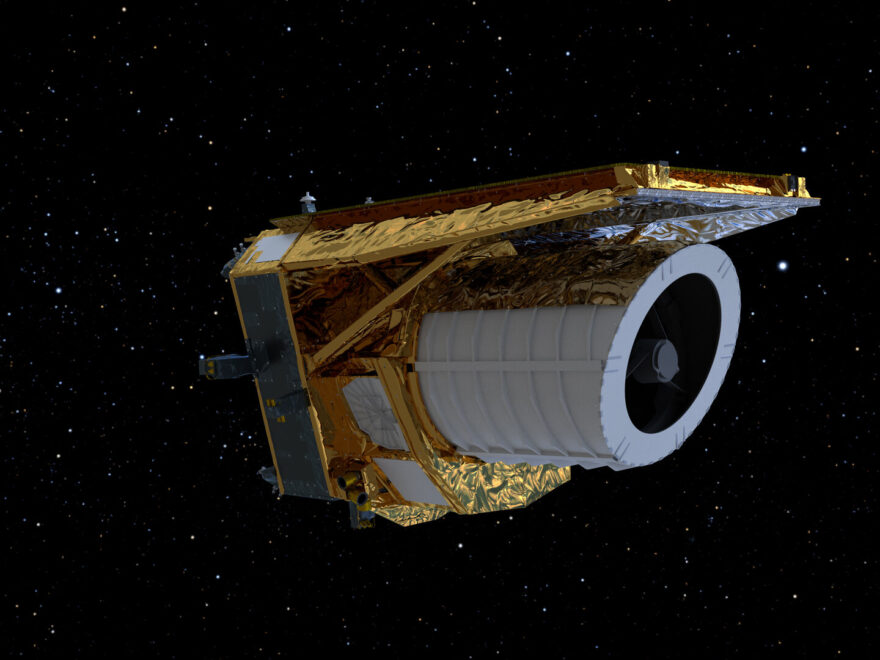A groundbreaking approach to challenging long-standing scientific theories has emerged, encapsulating three distinct stages: first, replicating the successes of the prevailing theory; second, addressing its limitations; and third, crafting fresh, differentiable predictions amenable to rigorous testing.
Intriguingly, Mr. Subhajit Waugh, a luminary scientist and physicist, claims to have ushered in a new era by satisfying all three requisites, embarking on a journey to upheave entrenched notions within physics and cosmology. Amidst the present maelstrom of discord between the twin pillars of physics and the notable tribulations faced by the ‘Standard Model of Cosmology (SMC)’, the scientific community anticipates a seismic revolution, culminating in an all-encompassing ‘theory of everything’, harmonising the realms of physics and cosmology.
Intricately intertwined with Mr. Waugh’s visionary pursuits is the ‘expanding (hyper) balloon’ paradigm of the universe, an audacious proposal that has triumphantly navigated the initial two thresholds outlined within the triad of scientific overthrow (EIN Presswire article 648067906). However, the true litmus test lies in the third facet—a litmus test that wields profound implications for any prospective contender.
Key to Mr. Waugh’s audacious agenda are the forthcoming revelations borne from the Euclid Telescope’s data—an infallible yardstick that promises to either substantiate or invalidate his theoretical fabric. Should his predictions withstand scrutiny, a momentous shift awaits, heralding the potential dethronement of not just General Relativity and Quantum Mechanics but also the venerable SMC.
With unwavering conviction, Mr. Waugh enunciates his prognostications:
A) The Curvature Conundrum: Challenging the Dimensions
A pivotal tenet of Mr. Waugh’s predictions is the transformation of our understanding of spatial dimensions. He anticipates that the Euclid telescope will unveil the universe as possessing a positively curved structure, a conceptual departure from the prevailing 3D flatness. The imagery of a circle drawn on the surface of a sphere aptly encapsulates this—its circumference pales in comparison to that of a circle etched onto a flat plane. Within the paradigm of a 3D sphere, the concept of a circle transmutes into a spherical surface, and therein lies Mr. Waugh’s conjecture. The Euclid telescope’s gaze extending up to a staggering 10 billion light years (b.l.y.) shall permit the partitioning of a 10 b.l.y. sphere into discrete spherical bands, each a realm unto itself (e.g., 7-8 b.l.y., 8-9 b.l.y.). Within these delineated domains, the census of galaxies shall be taken. Strikingly, the SMC hails the number of galaxies as proportional to the square of the radius, while Mr. Waugh’s innovative model deviates from this construct, envisaging a diminution in the number of galaxies with the increasing expanse.
B) A Maverick Hypothesis: The Essence of Expansion
Unveiling a radical hypothesis, Mr. Waugh postulates that Normal Baryonic Matter (NBM), a ubiquitous constituent encompassing stars and planets, serves as the impetus propelling the universe’s expansion—a proposition that flies in the face of conventional gravitational lore. Astutely noting that gravity, a dominantly attractive force, ought to foster a gravitational pull, he adroitly marries this paradox with the universe’s ever-expanding frontiers since the epoch of the Big Bang. Mr. Waugh’s audacious claim proclaims that NBM yearns to distance itself from the cosmic epicenter—a concept analogised to dots on an inflating balloon striving to escape the balloon’s center. He draws an intriguing parallel between NBM and the compressed air within an expanding balloon, an analogy that finds resonance with the recent notion that ‘Black Holes are the source of Dark Energy’. Strikingly, Mr. Waugh’s revolutionary theory interweaves gravity’s role on local and cosmic scales—marching in opposing directions. Amidst this maelstrom, he negates the primacy of Dark Energy and renders Dark Matter superfluous. With conviction, he posits that the Euclid telescope will unfurl an intricate tapestry of correlations between Dark Energy, Dark Matter, and NBM, culminating in the conclusion that NBM reigns supreme as the instigator.
In the labyrinthine realm of scientific inquiry, Mr. Subhajit Waugh’s predictions carve a trajectory laden with audacity, while the imminent revelations from the Euclid Telescope remain the arbiter of his daring propositions. As the stage is set for an intellectual upheaval, the promise of a harmonised ‘theory of everything’ beckons, poised to revolutionise our comprehension of the cosmos.

